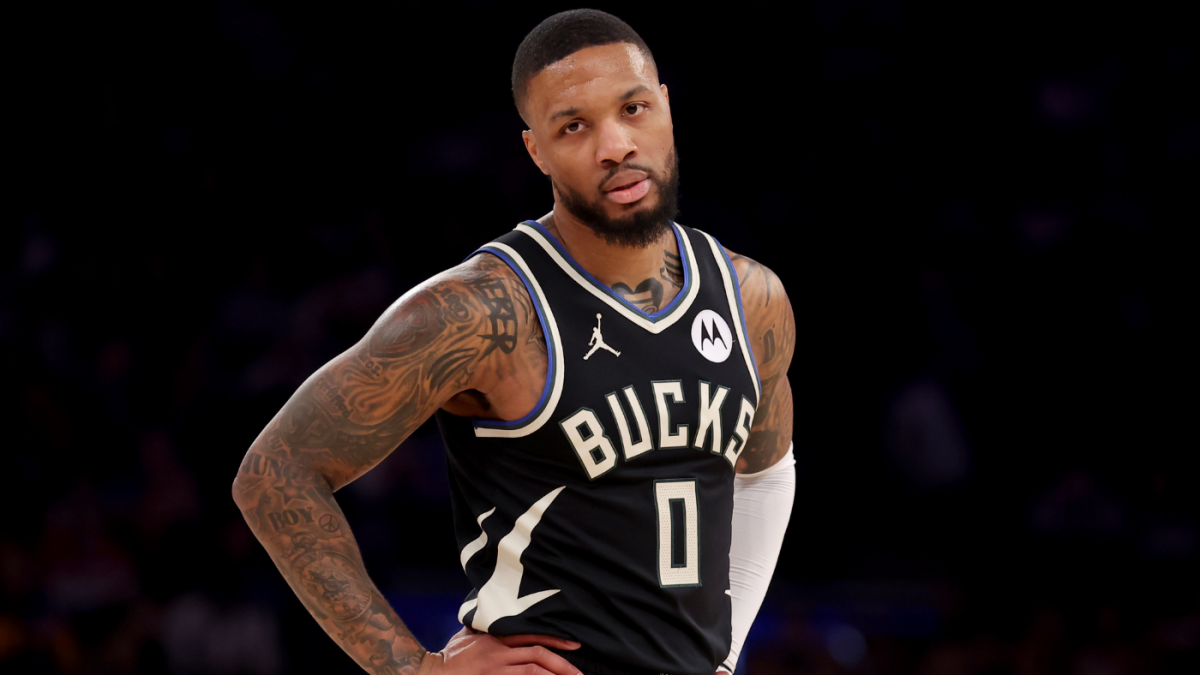The Milwaukee Bucks’ offseason moves have sent shockwaves through the NBA, with the team’s decision to waive Damian Lillard and sign Myles Turner marking a dramatic shift in their championship aspirations. This high-stakes gamble raises critical questions about the team’s future, the motivations behind these decisions, and the potential consequences for their long-term success.
The acquisition of Damian Lillard was initially hailed as a transformative move for the Bucks, designed to elevate them into perennial contenders. The idea was to combine Lillard’s explosive scoring and playmaking with Giannis Antetokounmpo’s dominance and Khris Middleton’s all-around game. However, the reality on the court fell short of expectations. Lillard’s ball-dominant style clashed with Antetokounmpo’s need for the ball, leading to offensive stagnation. Injuries, particularly Middleton’s health issues, further hindered the team’s ability to develop chemistry. Lillard’s own struggles—including a dip in scoring efficiency and defensive liabilities—compounded the problems. The final blow came during the playoffs when Lillard suffered a torn Achilles tendon, an injury that typically requires a lengthy recovery. This injury accelerated the Bucks’ decision-making process, forcing them to re-evaluate their long-term plans.
The acquisition of Myles Turner addresses a critical need for the Bucks: rim protection and floor spacing. Turner, at 28 years old, offers a younger, more athletic alternative to Brook Lopez, who has seen his mobility decline with age. Turner’s ability to block shots and knock down three-pointers will be invaluable alongside Antetokounmpo, allowing the “Greek Freak” to roam more freely on defense and focus on disrupting passing lanes. Offensively, Turner’s shooting range will open up the floor for Antetokounmpo’s drives to the basket, creating more opportunities for easy scores. However, Turner is not without limitations. He is not a particularly physical rebounder, and his defensive consistency has been questioned at times. Whether he can consistently provide the level of rim protection and defensive presence the Bucks need remains to be seen.
Waiving Lillard and stretching his contract is a complex financial maneuver designed to create cap space in the short term. By stretching Lillard’s remaining salary over five seasons, the Bucks significantly reduce their cap hit for the upcoming season, giving them the financial flexibility to sign Turner and potentially make other moves. However, this decision comes with long-term financial consequences. The Bucks will be paying Lillard a portion of his salary for the next five years, even though he is no longer on the team. This could limit their ability to pursue other free agents or re-sign key players in the future. The Bucks’ willingness to take on this financial burden underscores their sense of urgency to contend for a championship. They clearly believe that Turner is a better fit for their team and that his presence will significantly improve their chances of winning in the short term, even if it means sacrificing some financial flexibility down the road.
A central factor driving these decisions is undoubtedly Giannis Antetokounmpo. The Bucks are acutely aware of Antetokounmpo’s importance to the franchise and are committed to building a team around him that can compete for championships. The Lillard experiment, while initially promising, ultimately failed to deliver the desired results, potentially jeopardizing Antetokounmpo’s long-term commitment to the team. By acquiring Turner, the Bucks are signaling to Antetokounmpo that they are willing to make bold moves to improve the team and address its weaknesses. Turner’s presence could make Antetokounmpo’s life easier on both ends of the floor, potentially solidifying his commitment to Milwaukee. However, there is also a risk that Antetokounmpo could be unhappy with the decision to move on from Lillard, especially if he believes that the team did not give the partnership enough time to develop. Managing Antetokounmpo’s expectations and ensuring that he is fully on board with the team’s new direction will be crucial for the Bucks’ long-term success.
The Bucks’ decision to waive Lillard and sign Turner is a high-risk, high-reward gamble. The potential rewards are clear: improved rim protection, floor spacing, and a rejuvenated roster that is better suited to contend for a championship. However, the risks are equally significant: long-term financial constraints, potential chemistry issues, and the possibility that Turner fails to live up to expectations. The success of this move will depend on several factors. First, Turner must seamlessly integrate into the team’s system and consistently perform at a high level. Second, the remaining players on the roster must step up and fill the void left by Lillard’s departure. Third, the coaching staff must effectively utilize Turner’s skills and create a cohesive offensive and defensive system. If these factors fall into place, the Bucks could emerge as a legitimate title contender. However, if the move backfires, the Bucks could find themselves stuck in mediocrity, with limited financial flexibility and a disgruntled superstar.
The Milwaukee Bucks have made a bold and potentially franchise-altering decision to waive Damian Lillard and sign Myles Turner. This move represents a significant shift in strategy, a willingness to take risks, and a commitment to building a team around Giannis Antetokounmpo that can compete for championships. While the risks are undeniable, the potential rewards are too enticing to ignore. The Bucks have essentially bet their future on Turner, hoping that his presence will unlock the team’s full potential and propel them to the top of the NBA. Only time will tell if this gamble pays off, but one thing is certain: the Milwaukee Bucks have once again become one of the most intriguing teams in the league.











